This is something we’ve done for quite a few years now and it’s such a fun and rewarding early spring activity. If you’d like to try it too, here’s how to harvest maple syrup from your maple trees!
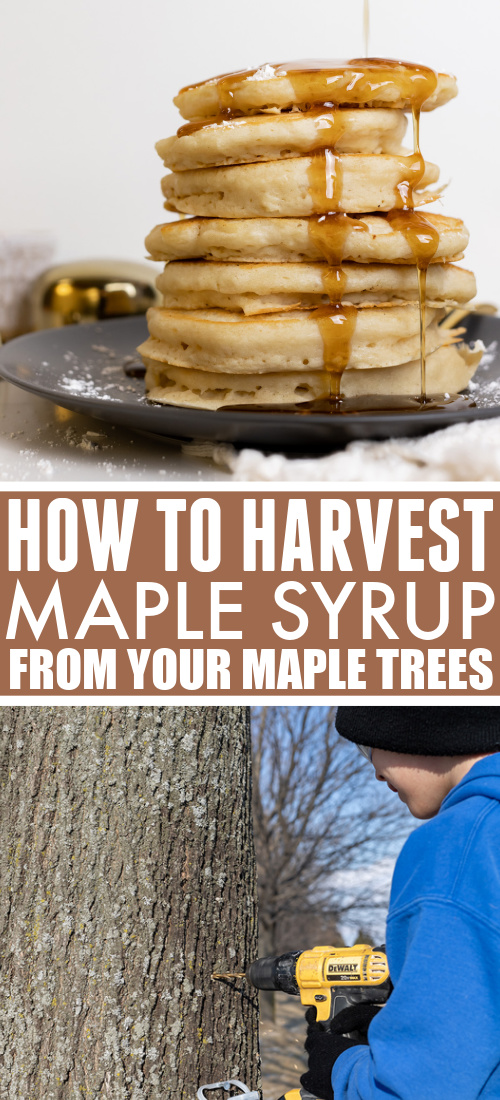
I don’t quite remember why we decided to try harvesting maple syrup from the maple trees on our property a few years ago, but its really become an early spring tradition around here. It’s so fun to check to see how much sap we’ve collected each morning during that time and to watch the temperature and try to determine when will be the very best day to start tapping our trees. Then we get to spend a sunny weekend day boiling our sap down outside and trying to get the consistency just right. It’s a slow process, so it’s a perfect opportunity maybe do a little yard cleanup while we’re out there waiting and checking on the syrup. We have about 12 big maple trees on our property, but we usually end up only tapping a few of them and we end up with enough syrup to last us for a few good pancake breakfasts. If you have some maple trees you’d like to try this with, here’s how to harvest maple syrup!
Which Type of Maple Trees to Harvest Maple Syrup From
Of course, traditional Sugar Maples are the first tree that you think of when it comes to maple syrup, but did you know that you can actually harvest maple syrup from any type of maple tree? The flavour of the syrup is slightly different for each variety of tree, and types other than Sugar Maples might not produce quite as much syrup due to a lower sugar content in the sap, but they still work very well for making your own syrup.
Most of our maples are Norway Maples, so those are the ones that we use for harvesting syrup. Most people will find that syrup made from Norway Maples tastes very similar to that made from Sugar Maples and works just fine in all of your typical syrup applications. Norway Maples are actually considered to be an invasive species as they tend to out-compete native species like Sugar Maples in a forest-setting, but our maples are all pretty well-contained in the middle of our lawn, have been there for thirty years or more as far as we know, and aren’t really affecting anything else, so we don’t worry too much about it. 🙂
Collecting the Sap From Your Maple Trees
This process is amazingly easy and doesn’t really take much skill other than finding the right time when the sap is really running. You’ll want to find that perfect time of year when the temperature is sort of wavering back and forth around the freezing mark. Ideally, you want it to be a bit below freezing at night and in the morning, but get up a few degrees above freezing during the day. Around here, we can usually find a week or so of ideal conditions around mid-to-late February.
One great trick is to follow a local maple syrup farm on social media and start tapping your trees when they post that they’ve started as well. They always know the exact right time and it always seems to come earlier than you expect it to.
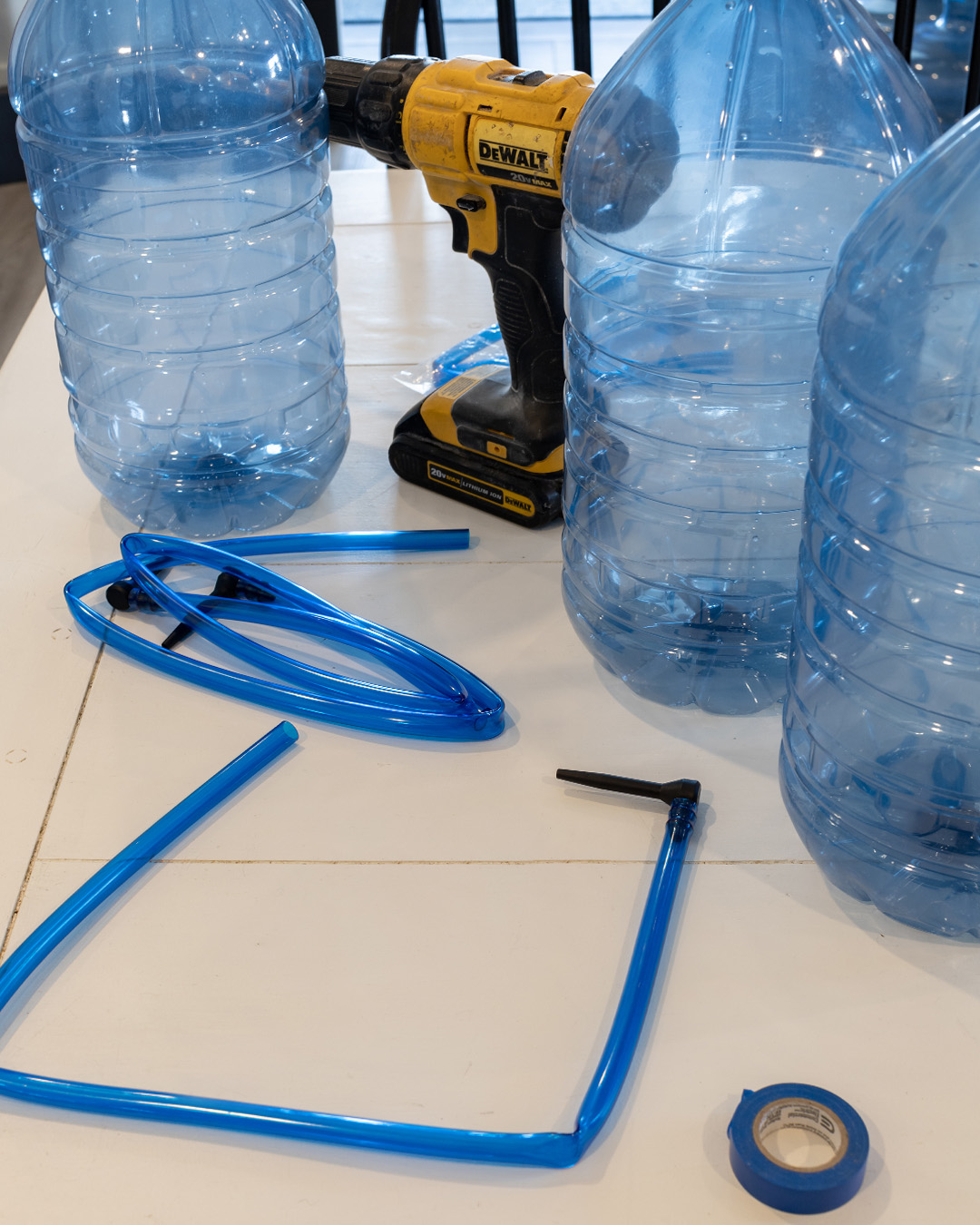
To collect your sap, you’ll need a maple syrup tapping kit, which you can easily order from Amazon for a few dollars. You’ll also need something to collect the sap. You might picture old-fashioned galvanized buckets hanging from a nail in a tree, but we actually use large gallon water bottles for this purpose. The water bottles protect the sap and keep any little bits of dust, dirt, and bark from falling into the sap, which is obviously ideal.
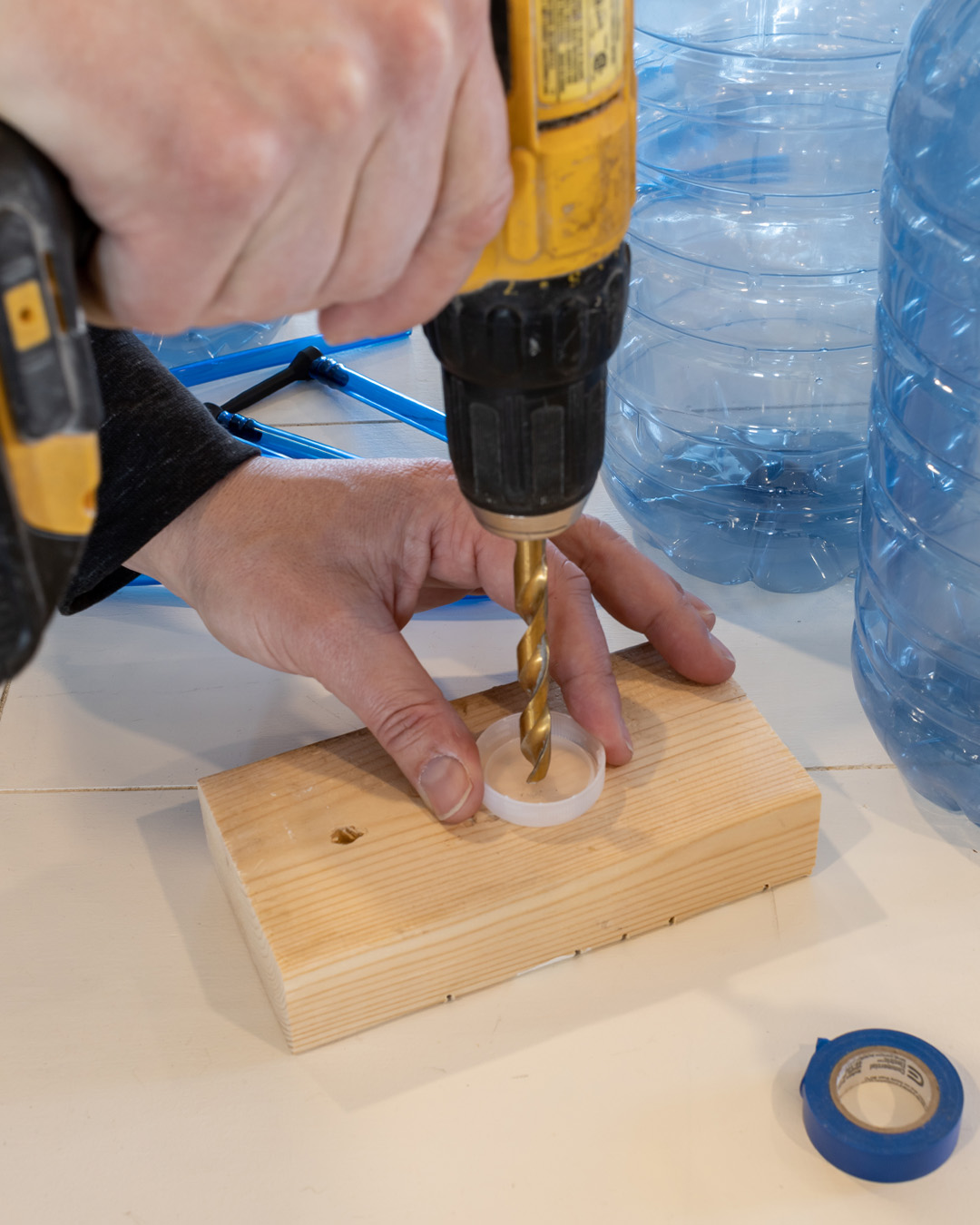
Start out by drilling a hole in the cap of your empty water bottle, making sure that the tube from your maple syrup tapping kit will fit into it.
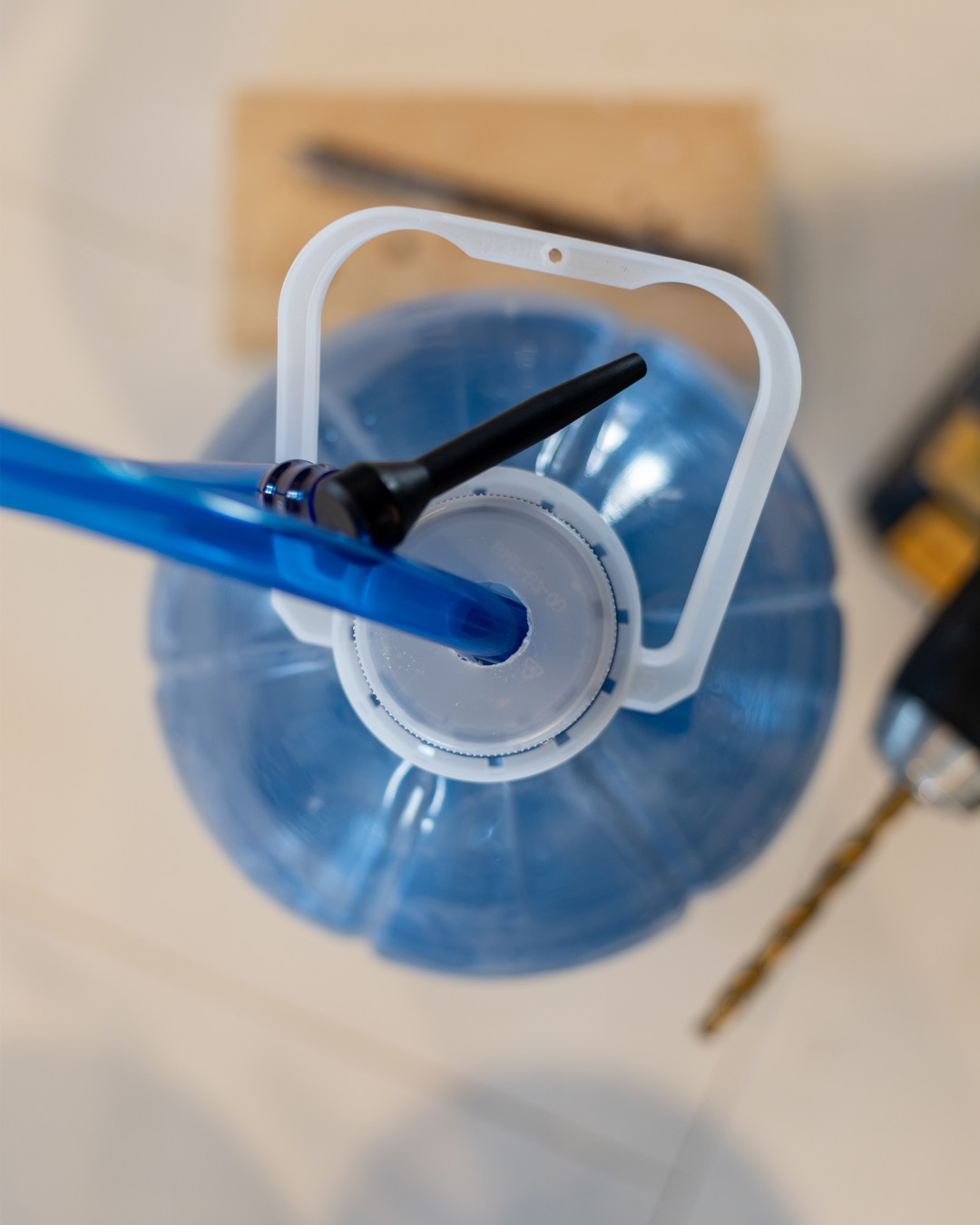
Next, head out to your first tree and add a nail near the base to hang your bottle from. These large plastic water bottles we use are handy because they come with a little handle that works well for this.
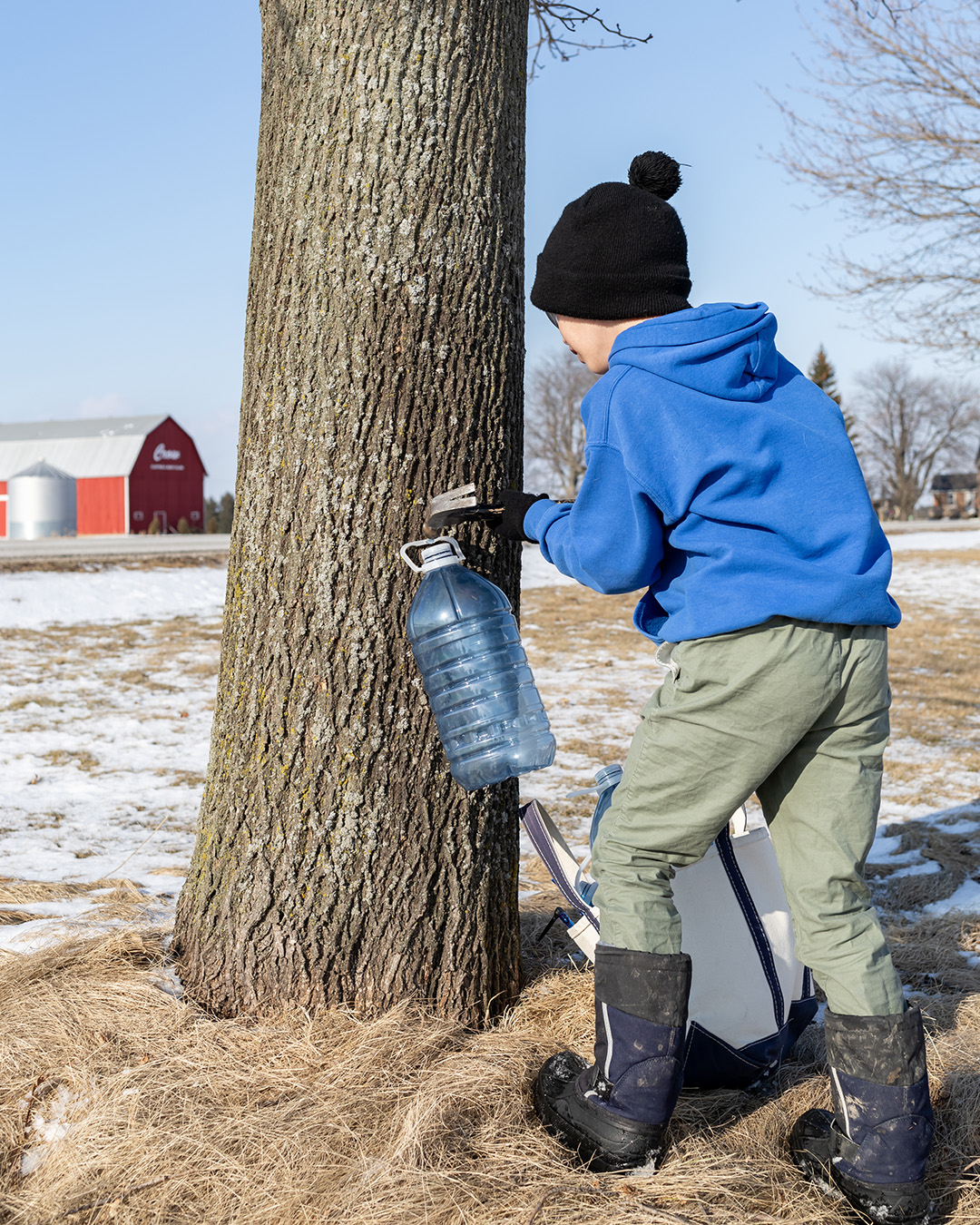
Drill a hole about a couple of inches deep into your tree and insert the tap into it.

Attach the tube to the tap and run it into the bottle below.
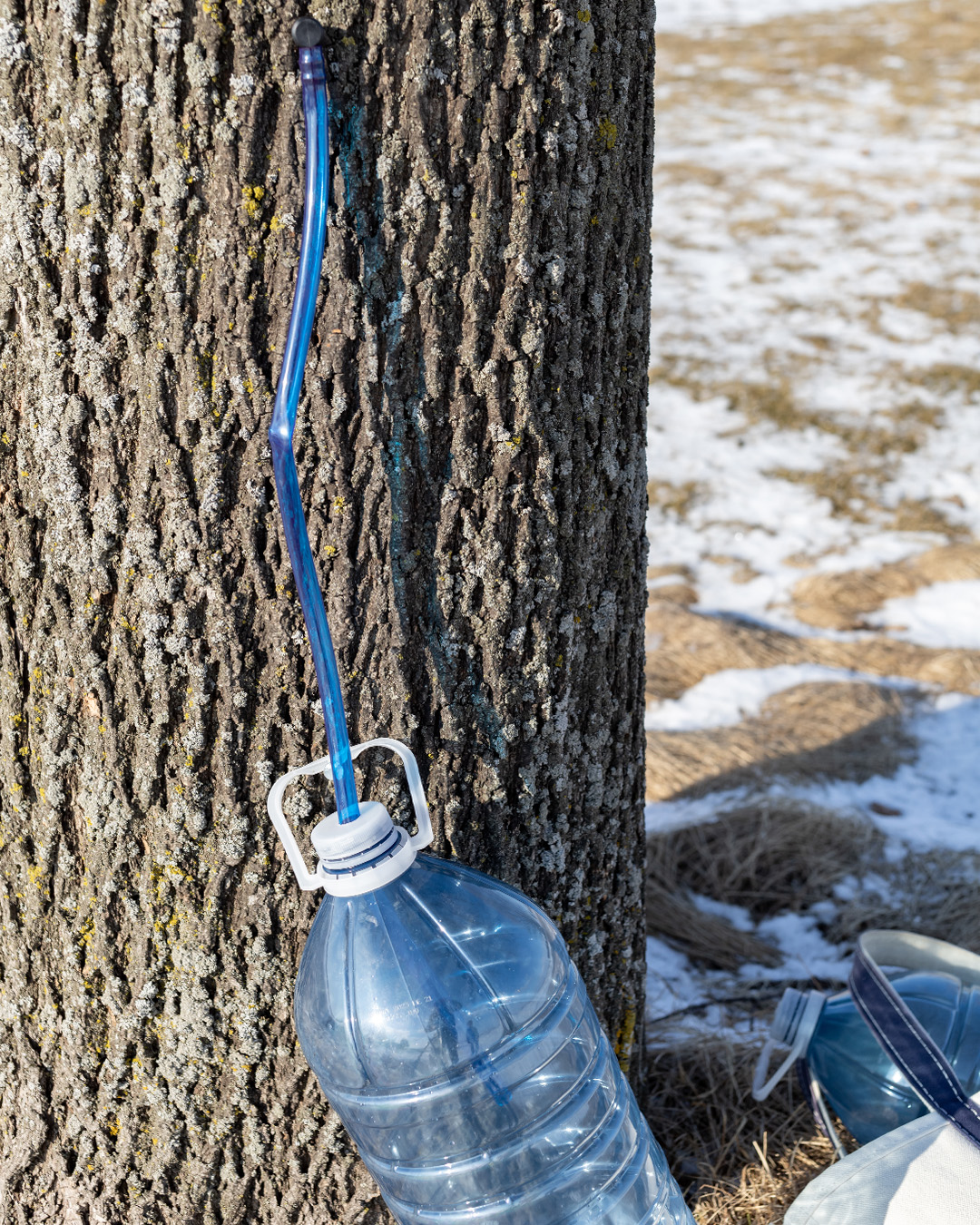
Repeat on as many trees as you like. We usually do three or four.
Check your bottles each day to see how much sap you’ve collected. We usually like to have a few extra empty bottles that we can empty our sap into if our bottles on the trees are getting full. We just store those in the fridge until we’re ready to do our boiling.
Once we have around six to eight full bottles, we consider that enough to do our boil. Generally speaking, 40 gallons of sap from a sugar maple will result in one gallon of syrup, and 60 gallons of sap from a Norway maple will result in 1 gallon of syrup. We usually end up with about a two-ish cups of syrup in the end.
Boiling Down Maple Sap to Make Maple Syrup or Maple Candies
Boiling the sap down to make syrup can be a bit messy because of how long you’ll be boiling for and just how much will be evaporating off, so it’s best to do this job outside. All you’ll really need is a camp stove like this one and a big, shallow pan to boil in. We just have a deep, wide pan that we found at the thrift store that we use specifically for this. I wouldn’t use your good cookware for this job, although the pan does clean up easily at the end of the day, since it’s just sugar that needs to be cleaned off, mostly.
The actual boiling process really couldn’t be much simpler: just pour some sap into your pan, turn on the camp stove, and bring the sap to a boil. When the sap has reduced a bit and left some room in the pan, add some more sap. Continue adding sap and boiling it down all day until you’ve used up all your bottles of sap.
Every once in awhile, you’ll see some foam start to form on the top of your boiling sap. Just use a large spoon to scoop that off as it forms.
Checking if Your Maple Syrup is Ready
When you start to get to the point where you think you’re close to having usable syrup, you’ll want to test it to make sure. Take a little ceramic dish and put it in the freezer for a few minutes. Remove the dish from the freezer and scoop out about a teaspoon of syrup from your pan. If it turns into a nice syrupy consistency upon hitting the cold dish, you can stop boiling. If the syrup still seems a little thin after coming into contact with the cold dish, keep boiling a bit more.
You’ll want to be sure that you don’t over boil your syrup, so it’s important to check it frequently. If you do over boil it, the syrup will turn to hard candy when it hits the cold dish. In that case, you can drop it in small amounts on parchment to turn it into candy. Sometimes we’ll remove a cup or two at the syrup stage and then keep boiling the rest to make candy on purpose, so that way we get both. 🙂
That’s really all it takes to make your own maple syrup! Just collect the sap, boil it, and test it for the perfect syrupy consistency. Definitely a great tradition to make those last few weeks of winter feel a little more fun.
Have you ever made your own maple syrup from your trees? Do you do anything differently from what we do?
MORE IDEAS LIKE THIS
- How to Fix Stretched Succulents
- Everything You Need to Know Before Installing 12×24 Tile
- How to Know the Right Time to Harvest Rhubarb
- How to Plant Asparagus
- Affordable Traditional Outdoor Planters
- How to Get Ants Off Cut Peonies
This post contains affiliate links.
Courtenay Hartford is the author of creeklinehouse.com, a blog based on her adventures renovating a 120-year-old farmhouse in rural Ontario, Canada. On her blog, Courtenay shares interior design tips based on her own farmhouse and her work as founder and stylist of the interior photography firm Art & Spaces. She also writes about her farmhouse garden, plant-based recipes, family travel, and homekeeping best practices. Courtenay is the author of the book The Cleaning Ninja and has been featured in numerous magazines including Country Sampler Farmhouse Style, Better Homes and Gardens, Parents Magazine, Real Simple, and Our Homes.
